Feihe HUANG: Supramolecular Polymers Based on Host-Guest Molecular Recognition Motifs
Pei WANG 2020-11-14
On November 13, 2020, Prof. Feihe HUANG, Chemistry professor from Zhejiang University was invited to the 41st Science Lecture in College of Science. He gave a talk on supramolecular polymers based on host-guest molecular recognition motifs, which was chaired by Prof. Bin TAN, deputy director of the Department of Chemistry, College of Science.
Guest Introduction
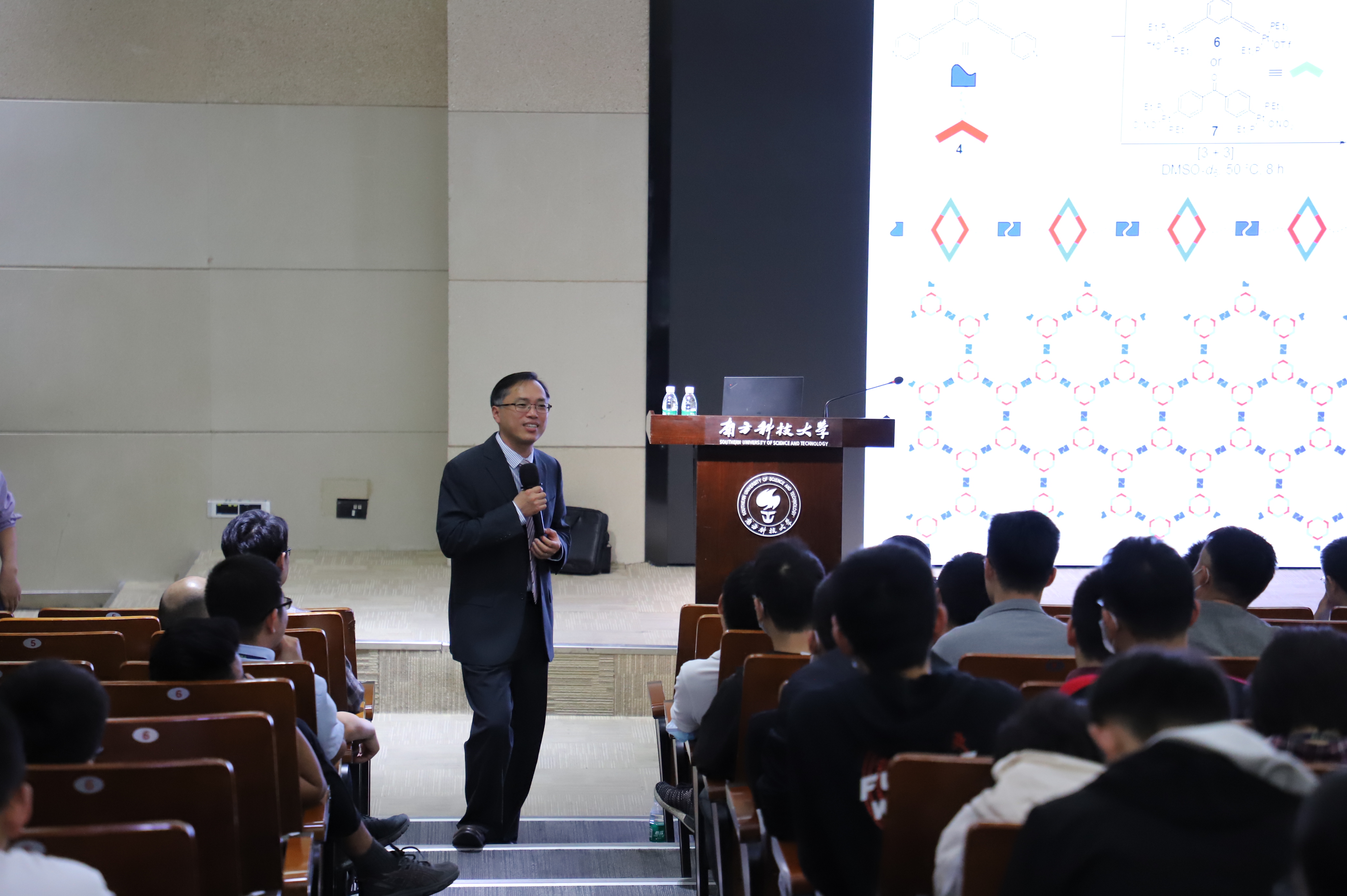
Prof. feihe HUANG works in Department of Chemistry at Zhejiang University. He obtained his Bachelor of Polymer Materials Science and Engineering from Hefei University of Technology and Master of Polymer Chemistry and Physics from University of Science and Technology of China. Then he earned the degree of Master of Science in Chemistry and finished his coursework and research for the Doctor of Philosophy in Chemistry from Virginia Polytechnic Institute and State University. He joined Prof. Peter J. Stang’s group in University of Utah as a postdoctoral fellow. His current research interests are supramolecular polymers, amphiphiles, and pillararence supramolecular chemistry. Awards and honors he has received to date include The National Science Fund (China) for Distinguished Young Scholars winner, Fellow of the Royal Society of Chemistry, Asian Chemical Congress Asian Rising Star, Chinese Chemical Society AkzoNobel Chemical Sciences Award, Cram Lehn Pedersen Prize in Supramolecular Chemistry, Royal Society of Chemistry Polymer Chemistry Lectureship Award, Chang Jiang Scholar, and the Royal Society Newton Advanced Fellowship Award. He has published more than 311 supramolecular chemistry papers. His publications have been cited more than 26164 times. His H-index is 87.
Lecture Review
"How far could we drive chemical self-assembly?" This is one of the 25 major scientific problems that need to be solved urgently in the 21st century as proposed by Science in 2005. Supramolecular polymer is one of the most important research directions in the field of chemical self-assembly. It is formed by polymer/small molecule elements (functionality≥2) through non-covalent bond self-assembly polymerization. It shows great potential to be applied in degradable, responsive, self-healing materials and other fields.
In the lecture, Prof. Huang cut into the importance of the research and application of supramolecular chemistry, gave an in-depth explanation of the research field of supramolecular chemistry, the process of supramolecular self-assembly, and the structure and application conditions of supramolecular compounds, and introduced the excellent properties such as synthetic reversibility, structural processability of non-covalent-based stable supramolecular compounds compared with other types of compounds.
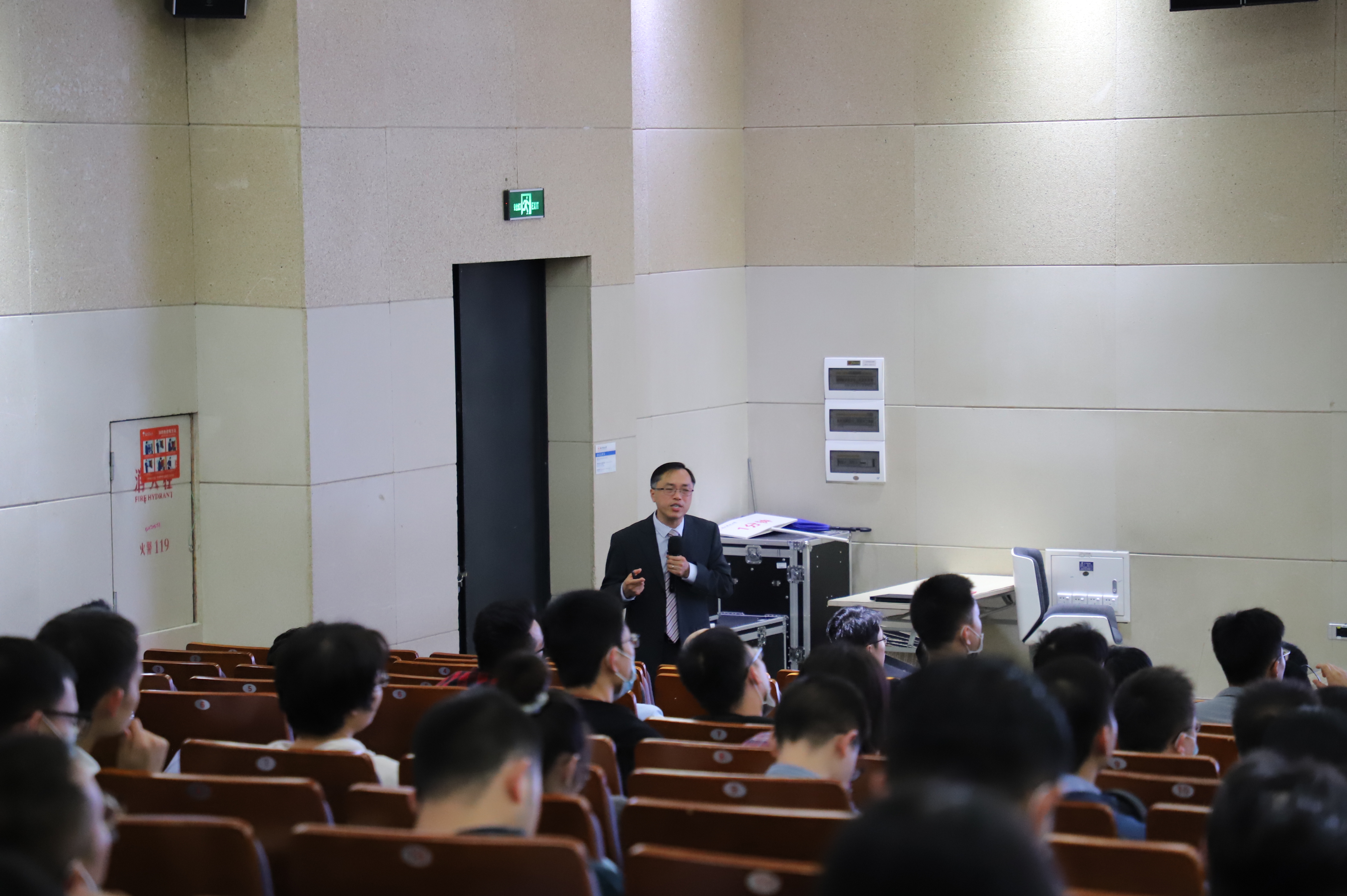
Prof. Huang is delivering the lecture
Then, Prof. Huang introduced 21-crown-7/secondary ammonium salt as a host-guest recognition building element to help realize the synthesis of interlocking supramolecular with 21 atoms as the smallest unit, breaking the traditional concept that 24-crown-8 structure is the smallest unit for maintaining a stable interlocking supramolecular. More importantly, based on the synthesized functionalized 21-crown-7/secondary ammonium salt interlocking supramolecular system with a controllable molecular scale, Huang Feihe's research group successfully realized the adjustment of different luminous intensity and color, pH response, low-concentration detection of small molecules, and identification of ester compounds with different structures, which solidly reflects the superiority and practicality of this new type of supramolecular.
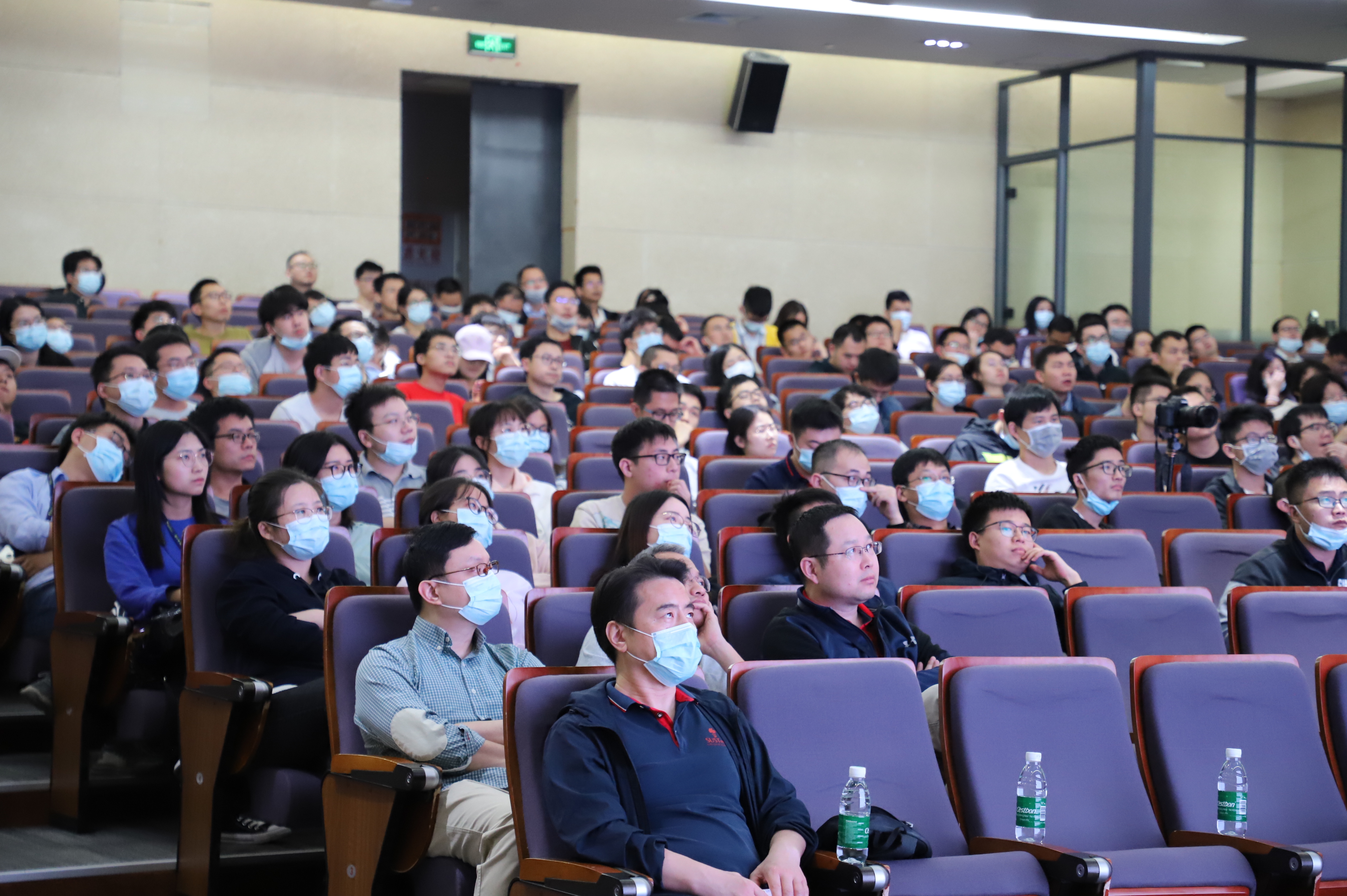
Teachers and students listening to the lecture
Based on the research experience, Prof. Huang also encourages young chemists to challenge established perception, seek breakthroughs in their respective research fields, and continuously enrich the theories and applications of chemistry.
Interaction
After the lecture, the audience had in-depth exchanges with Prof. Huang on the stability of supramolecular chemical interlocking structures, the control methods of functional structures, the identification methods of chemical structures, and the challenges and opportunities faced by the development of supramolecular chemistry. Finally, Prof. Zhiping ZHENG, head of the Department of Chemistry of College of Science, handed an honorary certificate to Prof. Huang, and took a photo with all the presented teachers.
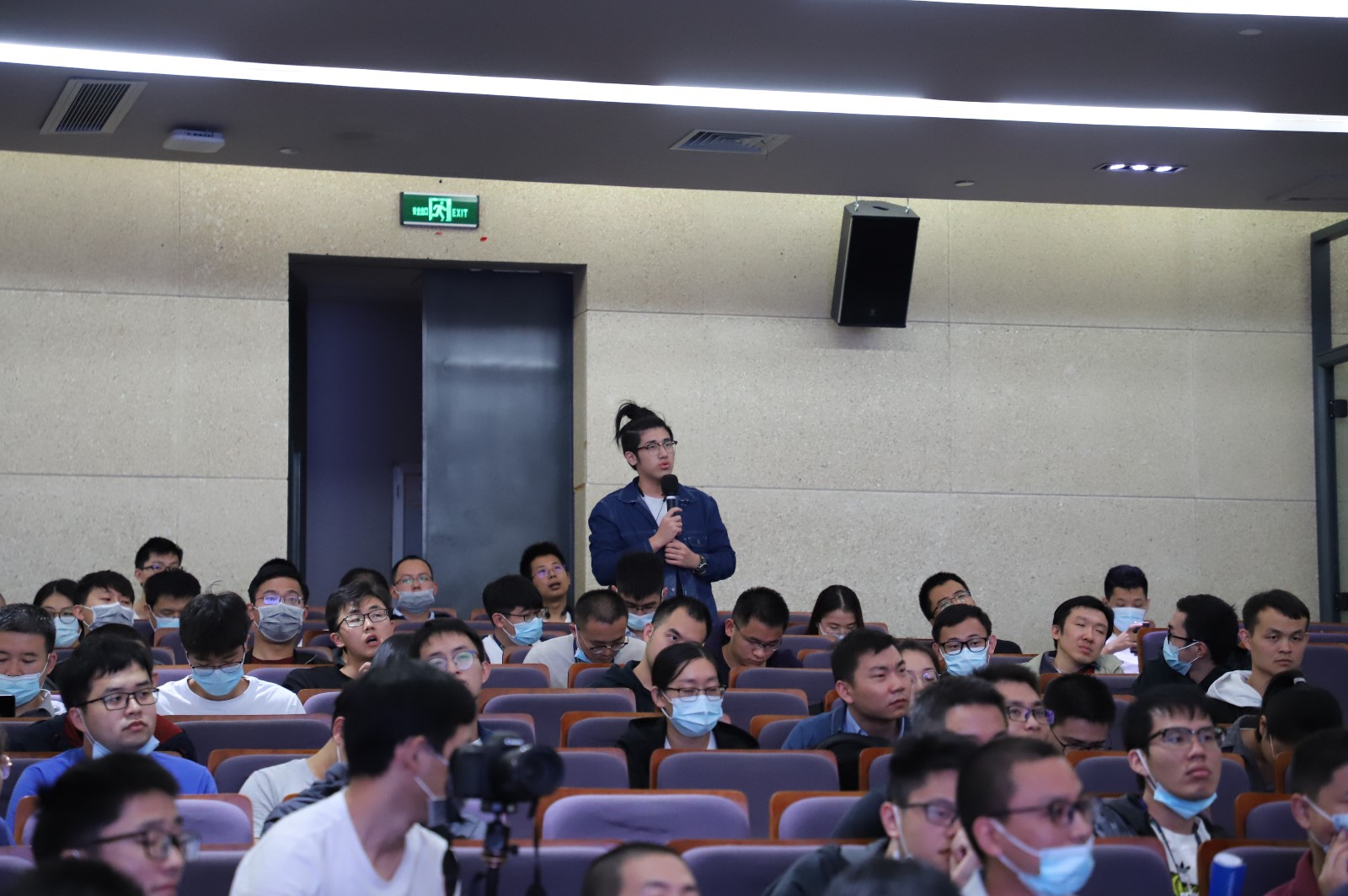
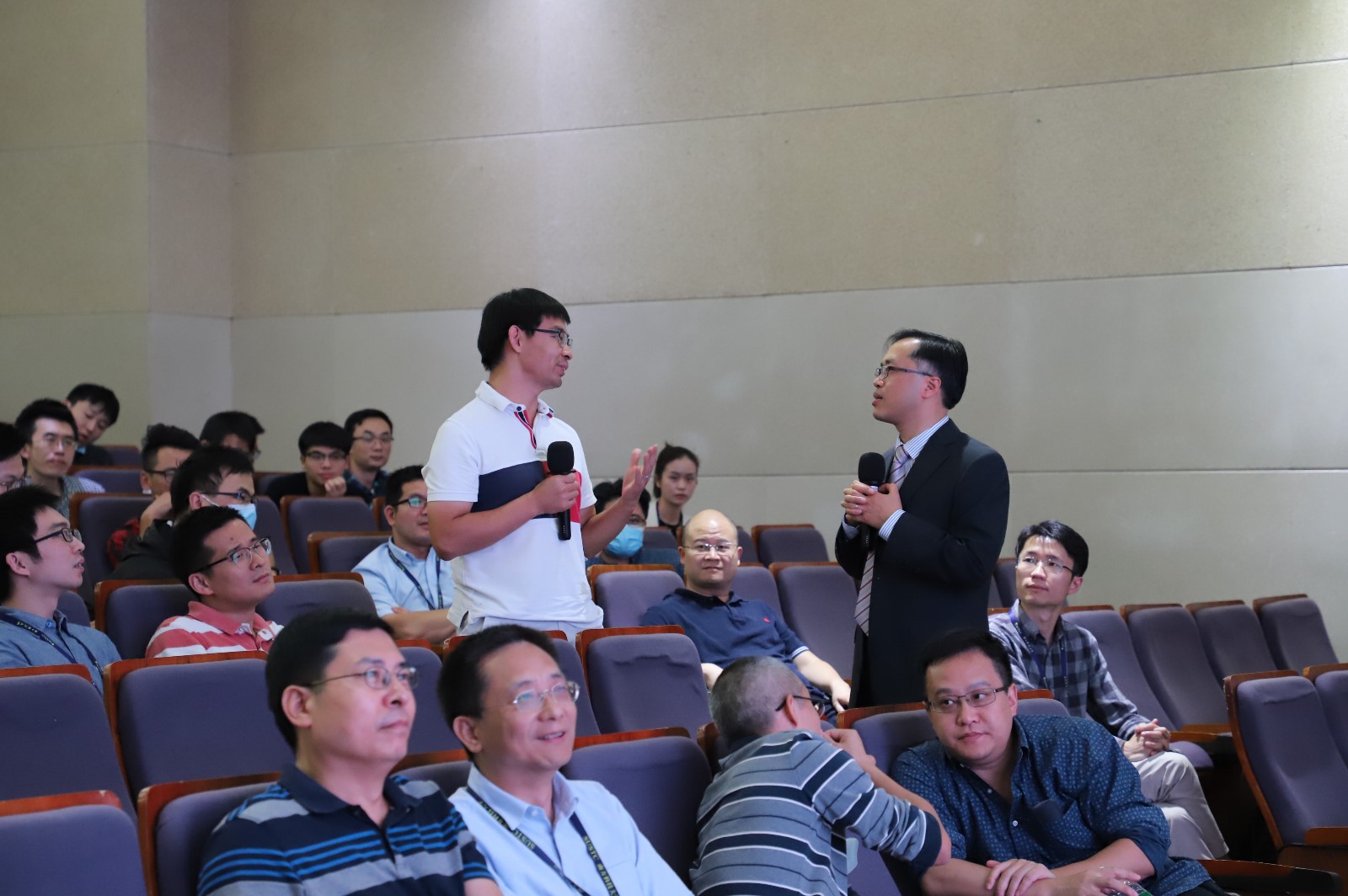
Interactions
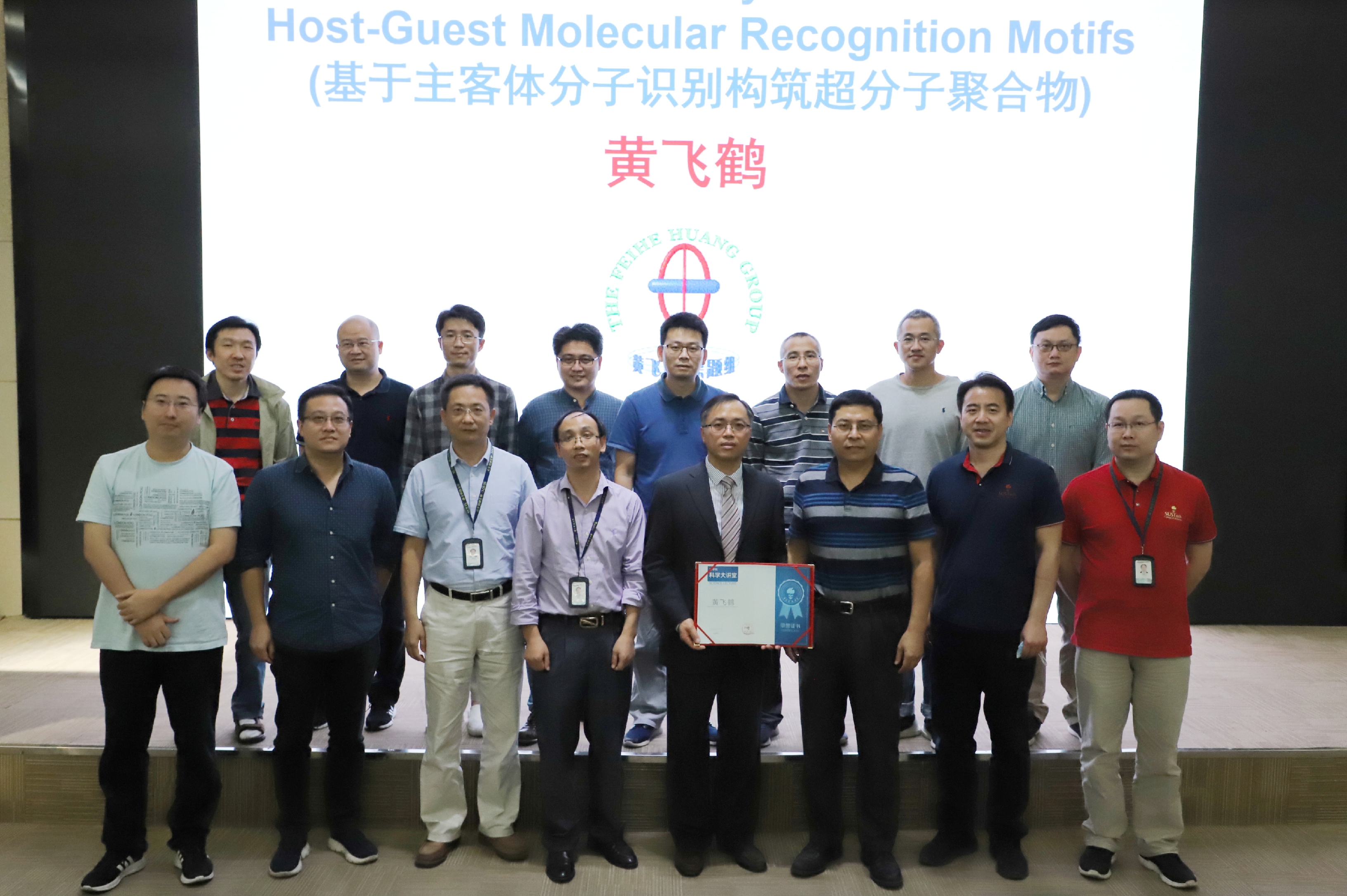
A group photo with Prof. Huang
Recommended Works:
1. Polyrotaxanes” In Physical Properties of Polymers Handbook
2. Benzo-21-crown-7/Dialkylammonium Salt [2]Pseudorotaxane- and [2]Rotaxane-Type Threaded Structures
3. Self-Sorting Organization of Two Heteroditopic Monomers to Supramolecular Alternating Copolymers
4. Responsive Supramolecular Gels Constructed by Crown Ether Based Molecular Recognition
5. Supramolecular Polymers Constructed by Crown Ether-Based Molecular Recognition
6. Pillararenes, A New Class of Macrocycles for Supramolecular Chemistry
7. Stimuli-responsive Supramolecular Polymeric Materials




